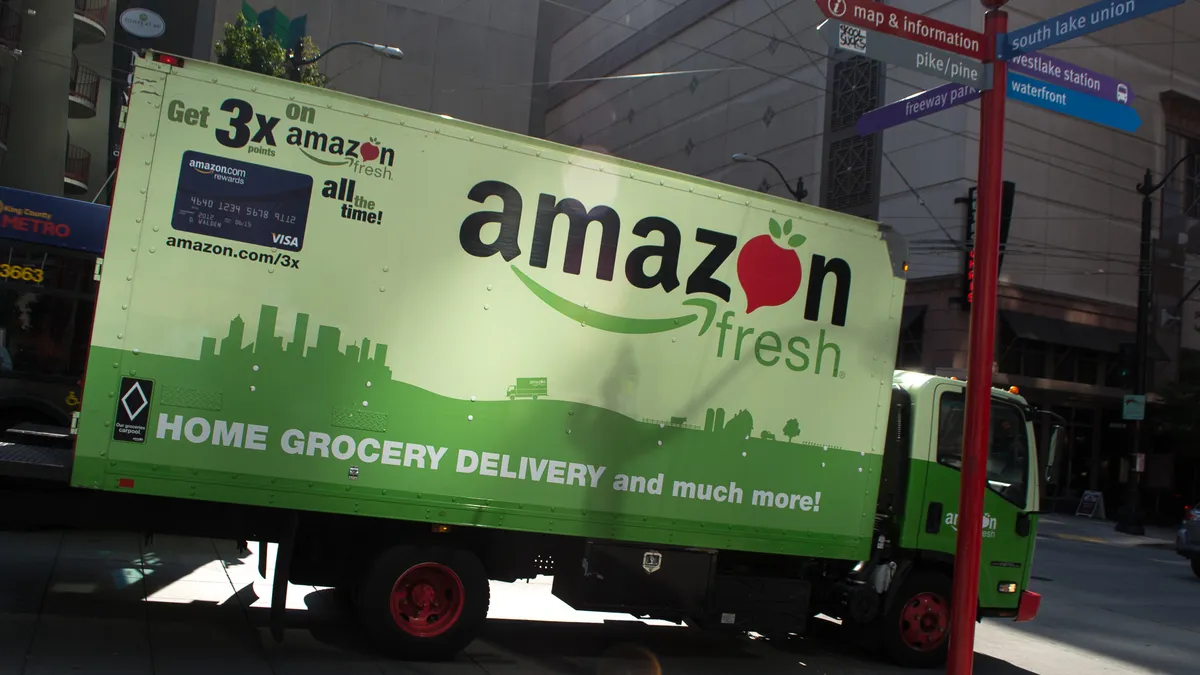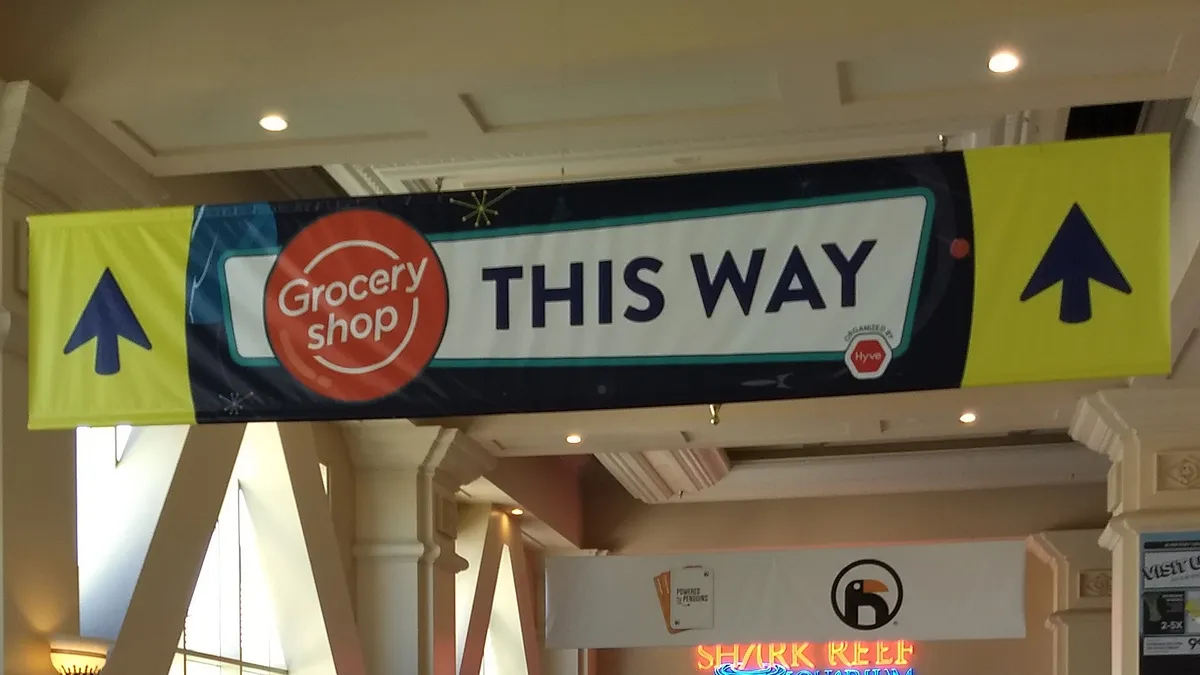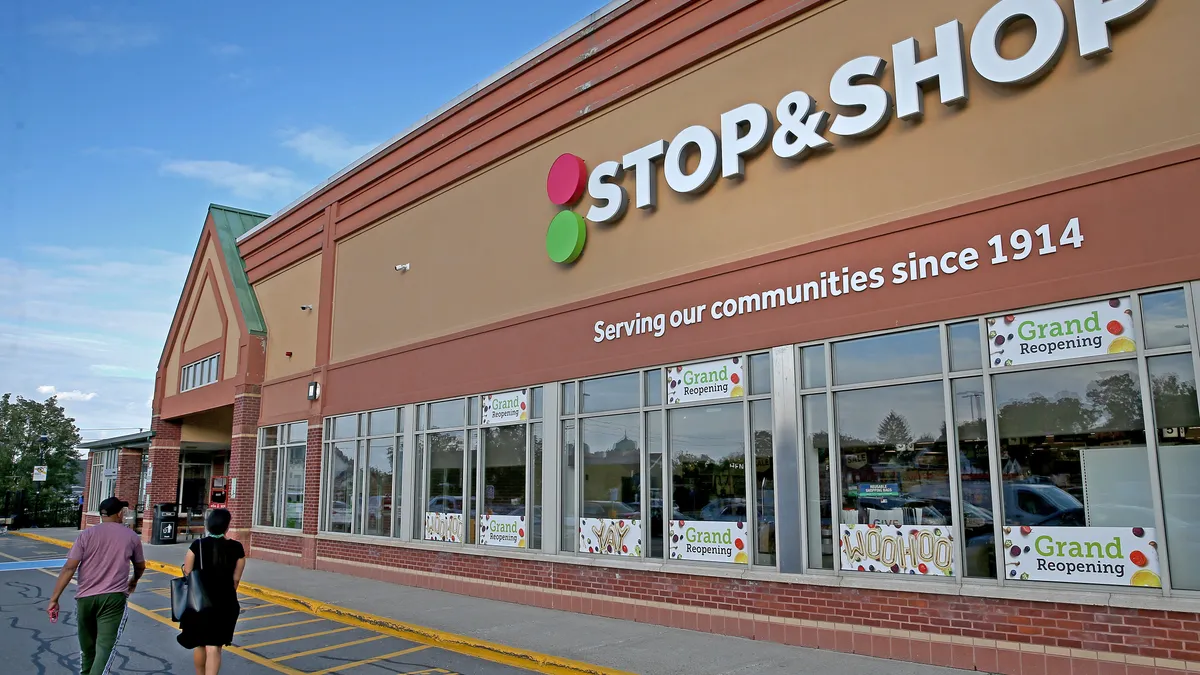Dive Brief:
- Amazon sold an estimated $650 million worth of groceries through its website in this year’s first quarter, according to One Click Retail. That’s a 50% increase over last year’s Q1, and a slight slowdown from the growth seen during last year's first quarter.
- Beverages were the top-selling items on the site, accounting for nine of Amazon’s 10 best-selling grocery products. Coffee showed 44% year-over-year sales growth while cold beverages experienced 40% growth, and combined the two categories represented around $285 million in sales. Snacks were another strong performer for Amazon, with sales up 38% to $70 million, according to One Click Retail.
- Amazon Pantry’s sales were up just 14%, a “leveling out” of growth for the service that lets customers bundle grocery and household goods together, according to One Click Retail. In March, Amazon announced it would make Pantry a separate subscription service for Prime members, costing $5 per month.
Dive Insight:
Amazon sells a lot of beverages and snacks, but it’s not yet a destination for the truly profitable full-basket grocery shop. Building those larger orders through its online channels and Whole Foods stores is a priority for the company, but it faces some stiff competition along the way.
The e-tailer’s efforts to build large grocery orders online have faltered recently. Last year, it scaled back AmazonFresh in several states — a blow for the service, which had been growing slowly since 2007, and a sign that sheer spending and force of will alone wouldn’t get shoppers to order more meat, produce and other perishables from the company.
Amazon Pantry is another service meant to spur large and regular grocery purchases, but One Click Retail reported its growth has flattened. Spinning Pantry off as a separate subscription service could help boost sales from core customers — Amazon’s subscription-based revenue rose 50% in the fourth quarter of last year, Bloomberg reported — but it seems unlikely to expand its overall appeal. Pantry brought in $55 million in this year’s first quarter, according to the report.
Amazon has pinned its hopes for full-basket shopping on its Whole Foods stores. With these stores and distribution centers, Amazon can offer same-day delivery and pump up its Fresh service. Whole Foods stores in seven cities currently offer same-day delivery through Prime Now, with a rapid rollout continuing through this year.
The company’s main challenger for full-basket trips is Walmart, which offers store pickup from hundreds of stores nationwide and plans to bring home delivery to 100 markets by year’s end. According to a report from Coresight Research, nearly 22% of Walmart’s online shoppers said they purchased “most” or “all or almost all” of their groceries from the retailer, compared to just 12% of Amazon shoppers who said the same.
For Walmart, leveraging the convenience of online ordering for large orders has been a key focus. Its click-and-collect service is free and features the same prices online as it does in-store. Its delivery service also offers equal pricing, and charges a $10 flat fee on orders $30 and over. So although more shoppers buy online from Amazon, Walmart has laid the groundwork for higher loyalty and profits as it ventures forth in e-commerce.
How Whole Foods customers utilize same-day delivery from the grocer, and how AmazonFresh evolves from this point is yet to be seen, but as Amazon continues adding 365 Everyday products to its site along with its own private label lines, sales volume will be one of the trends to watch. The e-tailer may be an online convenience store for most shoppers right now, but that will change as Amazon expands its online grocery services.










